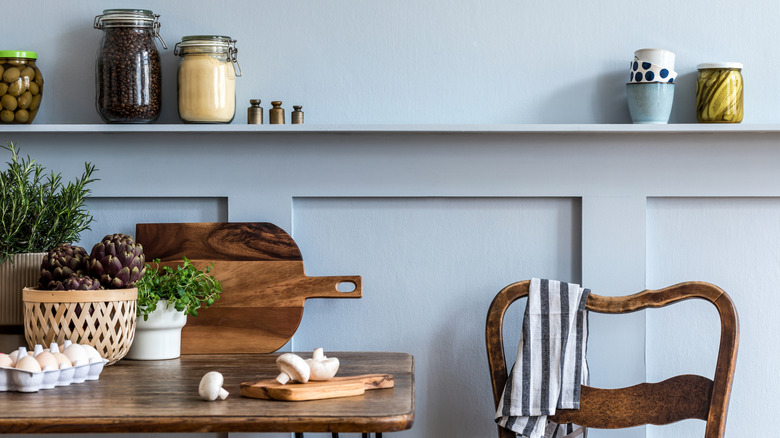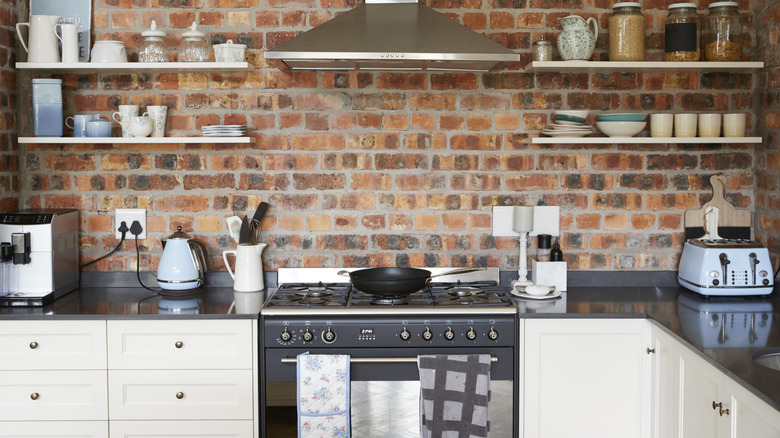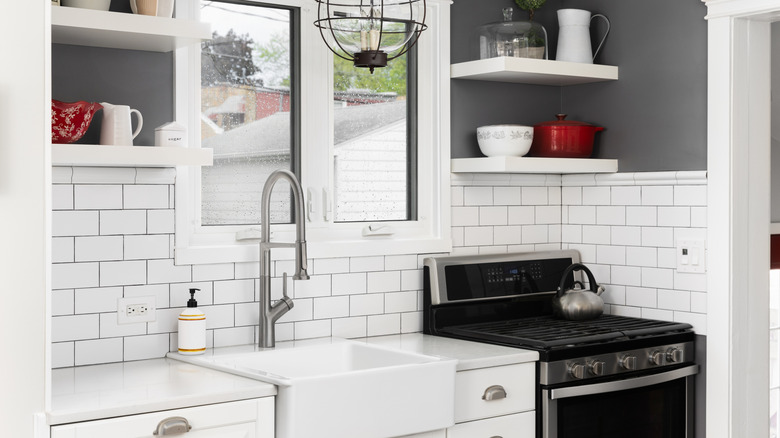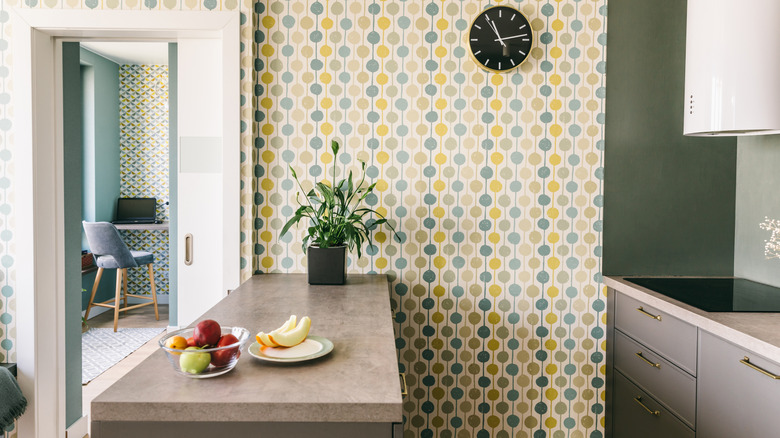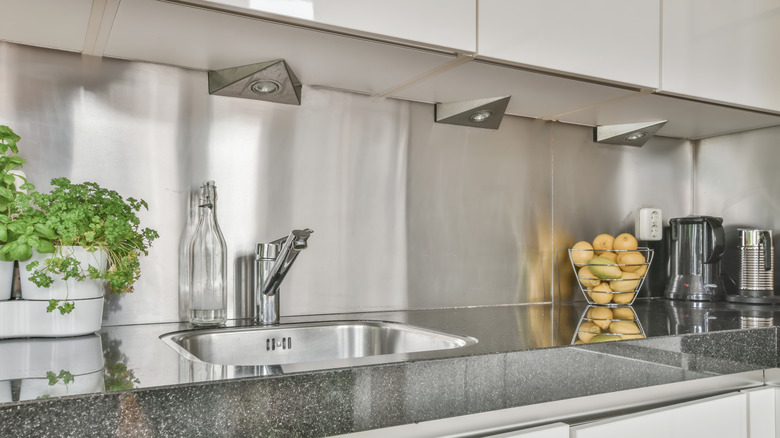The Best Way To Remove Grease Stains From Any Type Of Kitchen Wall
It's no secret that if you cook in your kitchen on a daily basis, you're bound to end up with various stains on your walls. Cooking bacon or frying up some chicken can create splatters that end up on your walls. And some of the most stubborn stains are grease stains. No matter what your walls are made of, grease can be a pain to get off. But what should you use to make sure you're getting those stubborn stains clean without ruining your walls? The truth is that some wall types require different cleaning approaches. While some only need a scrub with dish soap and water, other types of walls might need special cleaners to get grease off without damaging the wall.
Grease is a real pain to get out of multiple surfaces, especially if it's set in. The problem is that grease is made up of oils or fats, which are naturally water repellent, and that's what makes cleaning them such an issue. Thankfully, there are a lot of unexpected household staples that can easily remove grease stains from multiple surfaces. Not only are there techniques to get rid of fresh grease stains, but there are also ways to remove older ones — which is really great when you realize grease stains build up in sneaky spots we don't tend to notice, like behind a refrigerator. Many of these techniques work well and are safe to use on a variety of wall types.
Painted walls
Painted walls are one of the most common types of walls to have in a kitchen. The biggest issue with trying to remove a grease stain from a painted wall is accidentally scrubbing the paint off. This issue is why you should use a satin or semi-gloss paint in the kitchen. You always want to try dish soap and water on a cloth first. Hold the damp cloth on the stain and gently rub. If it doesn't come off, or is an older stain, try spraying vinegar, then use baking soda and let it sit. Gently scrub and wipe with a clean cloth.
Brick
When it comes to removing grease stains on brick walls, you always want to try the dish soap and water method first (the gentlest method). If that doesn't work, you can add some baking soda to a cloth, add a little dish soap to make a paste, and rub in a circular motion. After you finish, be sure to rinse with a wet cloth. Alternatively, you can clean with a paste of dish soap and salt.
Tile
Surprisingly, a handy bathroom staple might be your solution to remove stubborn grease stains from your tile backsplash. Yup, toothpaste. Grab a brush and a hefty dollop of toothpaste. Scrub the stained spot with your favorite non-gel toothpaste (gel has colorant that can dye your tile) and then rinse. Not only is it effective on dental stains, but it can also rid you of greasy, stained tiles.
Wallpaper
With wallpaper, removing grease stains requires some delicacy. There are two types of wallpaper: washable and non-washable. If you don't know which type you have, you are going to want to test these cleaning methods in a spot that isn't noticeable first. The first method is for washable wallpaper. Use baking soda and water to gently scrub the stain and then wipe with a moist cloth. For non-washable wallpaper, you are going to take bread, roll it into a ball, and then blot the stain. If that doesn't work, use some rubbing alcohol on a cloth and try dabbing the stain clean.
Stainless steel
For fresh grease stains on stainless steel, you will just use some dish soap and water on a cloth. Wipe in the direction of the grain, rinse with a damp cloth. For older stains, use a mixture of equal parts baking soda and water to gently scrub the stain (once again, in the direction of the grain). Be sure to rinse and dry so you won't have water stains or streaks.
Wood
Because wood is porous, grease stains can be a little hard to remove. It is always best to try the gentlest method first — dish soap and water. Using a gentle cloth you have dipped in your dish soap solution, wring it out well, and then gently rub on the stain. Always rub in the direction of the grain, and don't soak the wood. If the stain doesn't come out, try a degreaser made for wood and follow the directions on the bottle. Always make sure you dry the wood after cleaning.
Vinyl
Vinyl is the most forgiving when it comes to grease stains, so you will have more options to choose from. Before cleaning, use a damp cloth or paper towel to remove as much excess grease as possible. Just like the other types of walls, it's always a good idea to start with the gentlest method first: soap and water. If that doesn't work, you can use a degreaser-type cleanser that is specifically made for PVC/vinyl like Easy Off Heavy Duty Degreaser Cleaner Spray.

